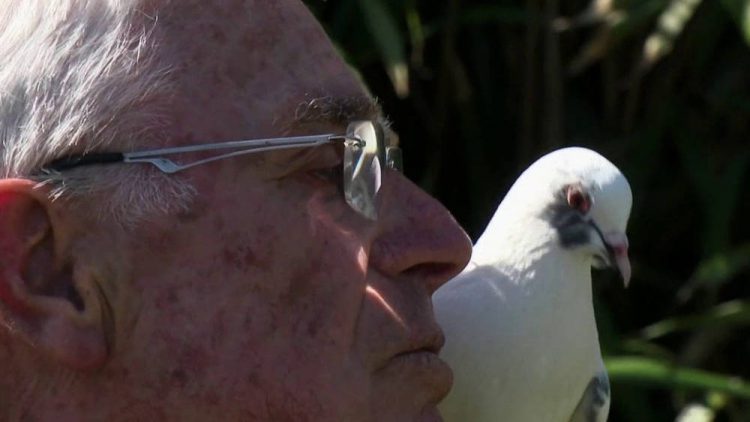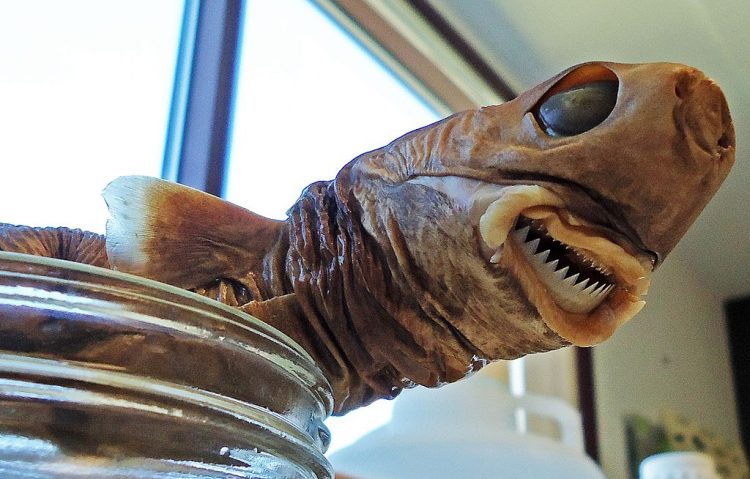Xavier Bouget, an 80-year-old pensioner from France’s Brittany region, and Blanchon, a majestic white pigeon, have been best friends for two years, ever since the Frenchman rescued the bird from becoming a cat’s lunch.
Xavier first met his unlikely companion two years ago, while walking to his house in the town of Gommenec’h. He noticed this small, almost featherless pigeon chick fall out of its nest, in a desperate attempt to escape a hungry cat. He didn’t think to help it at first, but when he got home and mentioned it to his wife, Marie-Françoise, she asked him why he didn’t pick it up. So he went back to get the small pigeon chick, which had miraculously managed to escape the purring predator until his return. Xavier came home with the frail bird in his bird, not knowing that it would soon become his best and closest friend.





















